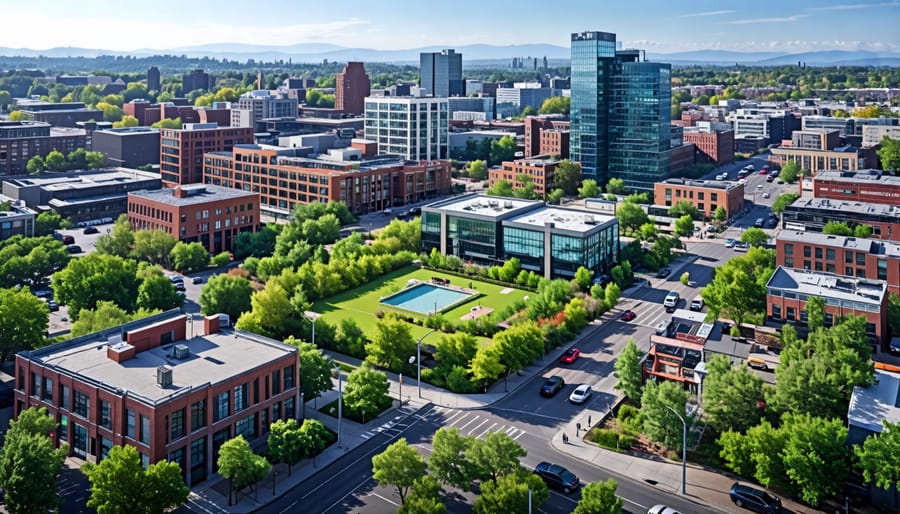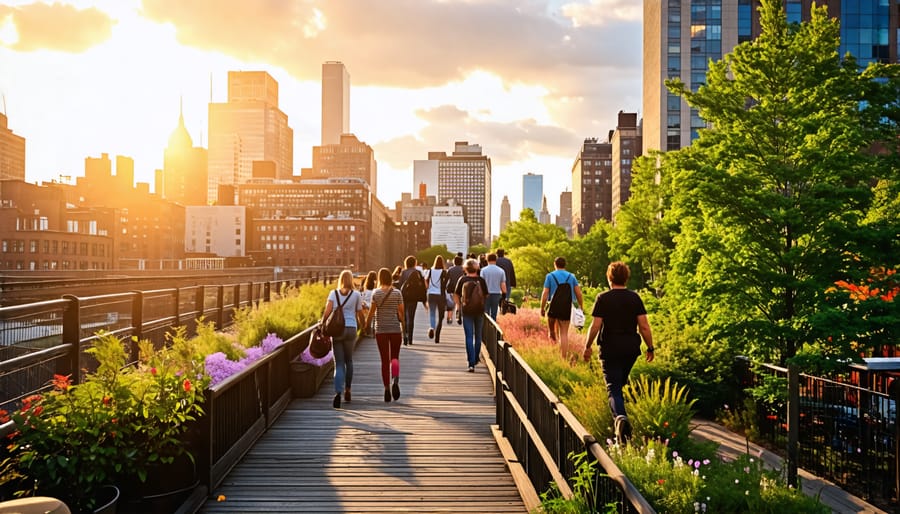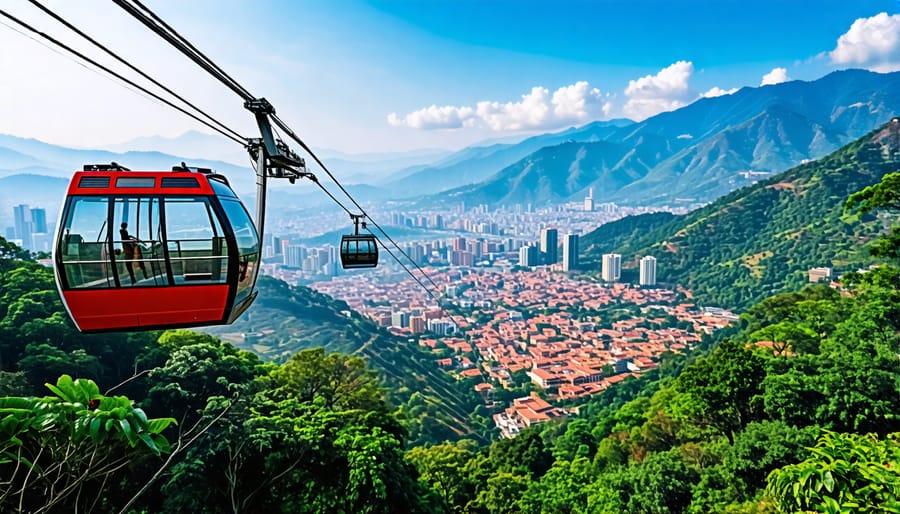Transforming cities through urban revitalization is a powerful way to breathe new life into struggling neighborhoods. From rehabilitating historic buildings to revamping public spaces, successful revitalization projects balance economic development, urban sustainability, and community engagement. This article showcases inspiring examples of urban revitalization from around the world, highlighting the strategies and impacts of these transformative initiatives. Through an in-depth look at case studies like the High Line in New York City, Medellín’s innovative public transportation system, and Copenhagen’s eco-friendly neighborhood of Nordhavn, readers will gain insights into the key elements of effective urban revitalization. Join us as we explore how these visionary projects are reshaping cities, improving quality of life, and creating vibrant, sustainable communities for the future.
Pearl District – Portland, Oregon

History and Context
The district, once a thriving hub of manufacturing and industry, experienced a sharp decline in the latter half of the 20th century. Factors such as deindustrialization, suburbanization, and economic shifts led to the closure of factories, job losses, and a dwindling population. As businesses moved out and residents followed, the area was left with vacant buildings, deteriorating infrastructure, and a lack of investment. The district’s proximity to the city center and its rich industrial heritage, however, presented unique opportunities for revitalization. Recognizing the potential to transform the underutilized spaces into vibrant, mixed-use neighborhoods, city officials and community leaders began to explore strategies for renewal. Through a combination of adaptive reuse, infrastructure improvements, and community engagement, the groundwork was laid for a comprehensive revitalization effort that would breathe new life into the once-neglected area.
Revitalization Strategies
The success of urban revitalization projects often hinges on a combination of strategic initiatives, innovative projects, and forward-thinking policies. Key strategies include adaptive reuse of existing structures, such as converting abandoned industrial buildings into trendy lofts or transforming underutilized spaces into vibrant mixed-use developments. Participatory planning processes that engage local communities in decision-making have also proven effective in fostering a sense of ownership and ensuring that revitalization efforts meet the unique needs of each neighborhood. Infrastructure improvements, particularly in public transit and walkability, can catalyze economic growth and improve quality of life. Additionally, targeted incentives for businesses, such as tax breaks or streamlined permitting, can attract new investment and spur job creation. By leveraging these strategies in a comprehensive, context-sensitive manner, cities can breathe new life into struggling areas and create thriving, sustainable communities.
High Line – New York City
Reimagining Infrastructure
The reimagining of the disused rail line began with a bold vision from a team of renowned architects and urban planners. Through an iterative design process, they sought to transform the derelict space into a vibrant, multi-functional amenity that would reconnect neighborhoods and revitalize the surrounding areas. The design team conducted extensive community engagement sessions to gather input from local residents, businesses, and stakeholders. This collaborative approach ensured that the final design would reflect the community’s needs and aspirations. The resulting plan called for the adaptive reuse of the rail infrastructure, incorporating green spaces, pedestrian and cycling paths, public art installations, and gathering areas. Innovative engineering solutions were employed to address challenges such as structural integrity, accessibility, and environmental remediation. The creative repurposing of the rail line showcased the power of imaginative design to breathe new life into underutilized urban spaces while preserving the area’s industrial heritage.

Economic and Social Impact
The High Line has had a profound economic and social impact on the surrounding neighborhoods in Manhattan’s West Side. Since its opening in 2009, the elevated park has attracted millions of visitors annually, stimulating significant investment and revitalization in the area. Property values have soared, with new residential and commercial developments springing up along the park’s route. The increased foot traffic has also benefited local businesses, leading to the opening of new restaurants, boutiques, and art galleries. Moreover, the High Line has become a vibrant public space, fostering community engagement and social interaction among residents and visitors alike. It has transformed a once-neglected industrial area into a thriving, livable neighborhood, demonstrating the power of innovative urban design to catalyze economic growth and enhance quality of life. The High Line’s success has inspired similar projects worldwide, cementing its status as a model for urban revitalization in the 21st century.
Medellin – Colombia
Participatory Urbanism
Medellin’s urban revitalization success hinged on participatory urbanism – actively involving the community in planning and decision-making processes. The city pioneered inclusive strategies, such as participatory budgeting, where residents could directly influence investment priorities in their neighborhoods. Community workshops and citizen assemblies fostered dialogue between planners and residents, ensuring that projects addressed local needs and aspirations. This bottom-up approach empowered marginalized communities, building trust and ownership in the transformation process. Medellin’s experience demonstrates that when citizens are engaged as partners, urban revitalization efforts are more likely to be sustainable, equitable, and responsive to the diverse needs of the urban fabric. By making community engagement central to its methodology, Medellin set a powerful precedent for cities seeking to transform through collaborative, people-centric approaches.
Metrocable and Social Urbanism
Medellín, Colombia’s Metrocable system exemplifies how transit infrastructure can drive social urbanism and neighborhood revitalization. Launched in 2004, the cable car network connects historically marginalized hillside communities to the city center, providing affordable, efficient transportation. By linking these neighborhoods to economic opportunities, education, and services, the Metrocable has improved quality of life and social inclusion. The project’s success lies in its community-driven approach, with residents involved in planning and implementation. Alongside the cable cars, the city invested in public spaces, libraries, and community centers, creating vibrant, safe gathering places. This holistic strategy has reduced crime, increased property values, and fostered a sense of pride. Medellín’s Metrocable demonstrates the transformative power of well-designed transit and its potential to catalyze positive change in underserved areas, offering a model for cities worldwide.

Granville Island – Vancouver
Adaptive Reuse
Adaptive reuse, the process of repurposing existing buildings for new functions, has emerged as a powerful tool in urban revitalization. Industrial structures, once the heart of manufacturing and production, are now finding new life as vibrant community spaces. These transformations not only preserve the architectural heritage of cities but also catalyze economic growth and cultural renewal.
One striking example is the conversion of former factories into bustling markets, where local entrepreneurs and artisans showcase their wares. These reimagined spaces often feature open floor plans, high ceilings, and ample natural light, creating an inviting atmosphere for shoppers and vendors alike. Similarly, decommissioned warehouses have been transformed into avant-garde galleries and performance venues, providing platforms for emerging artists and fostering creative communities.
By breathing new life into these historic structures, adaptive reuse projects demonstrate the potential for sustainable, community-driven revitalization that honors the past while embracing the future.
Placemaking and Identity
Granville Island’s transformation from an industrial wasteland to a vibrant cultural hub exemplifies the power of placemaking in urban revitalization. The island’s redevelopment focused on creating a distinct identity through strategic planning and programming. The adaptive reuse of former industrial buildings into unique shops, galleries, and performance spaces helped establish a strong sense of character. The island’s public market, featuring local artisans and food vendors, became a centerpiece of its identity. Granville Island’s success lies in its ability to cultivate a sense of place through a mix of creative businesses, public spaces, and community events. By prioritizing pedestrian-friendly design, encouraging diverse activities, and supporting local entrepreneurs, the island has become a model for placemaking in urban revitalization. The island’s unique character attracts both locals and tourists, demonstrating the economic and social benefits of creating a strong identity through strategic planning and programming.
Downtown LA – Los Angeles
Residential Renaissance
The residential renaissance in urban cores across the nation is transforming skylines and revitalizing downtowns. As demand for walkable, vibrant urban living grows, developers are meeting the challenge through adaptive reuse of underutilized office buildings and bold new high-rise construction. Former commercial spaces are being reimagined as trendy lofts and apartments, breathing new life into historic structures. Meanwhile, sleek residential towers are rising above city streets, offering luxury amenities and panoramic views. This surge in downtown housing options is attracting diverse residents, from young professionals to empty nesters, drawn by the convenience, culture, and energy of urban centers. The residential boom is not only creating much-needed housing stock but also stimulating economic growth, supporting local businesses, and fostering vibrant, 24/7 communities. As the trend continues, it is clear that the future of many cities lies in the strength of their residential core.
Transit and Connectivity
Downtown LA is undergoing a transformative shift thanks to significant investments in public transit and pedestrian infrastructure. The expansion of the Metro Rail system, including new light rail and subway lines, is dramatically improving connectivity between Downtown and surrounding neighborhoods. This enhanced accessibility is attracting new residents, businesses, and visitors to the area.
In tandem with transit upgrades, the city is prioritizing walkability through initiatives like the Downtown LA Pedestrian Study. Widened sidewalks, improved crosswalks, and pedestrian-friendly streetscapes are creating a more vibrant and inviting urban environment. Projects like the Grand Park renovation exemplify how thoughtful design can transform public spaces into thriving community hubs.
These transit and walkability enhancements are catalyzing a new era of urban living in Downtown LA. As the area becomes more connected and navigable, it is poised to attract further investment, economic activity, and community vibrancy in the years ahead.
Conclusion
The examples of urban revitalization discussed demonstrate the transformative potential of strategic interventions in urban environments. Key success factors include community engagement, public-private partnerships, and a holistic approach that addresses social, economic, and environmental challenges. Adaptive reuse emerges as a powerful tool for preserving heritage while accommodating new uses. Transit-oriented development and participatory planning also stand out as effective strategies for revitalizing urban areas. As cities continue to evolve, urban revitalization will remain a critical tool for creating vibrant, resilient, and inclusive communities. By learning from these examples and embracing innovative approaches, urban planners, architects, and developers can shape a future where cities thrive as hubs of opportunity and sustainable growth.

